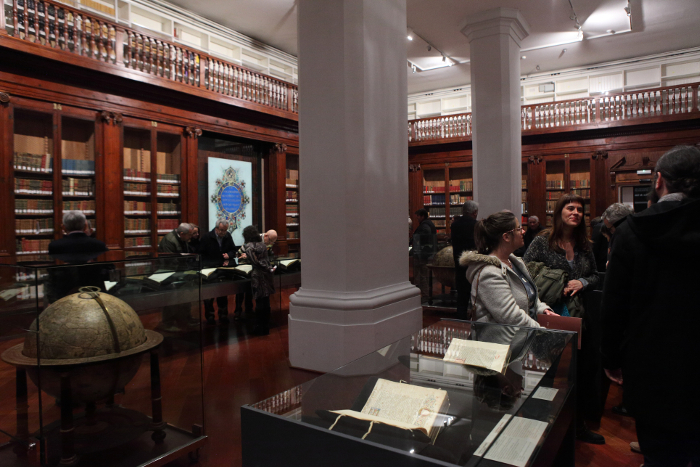Duc de Calàbria Hall is on the first floor, at La Nau Cultural Centre. With a 234.75 m2 exhibition floor, this room has access doors, CCTV and a volumetric detector on the outside; inside, there are two CCTV cameras and 360º volumetric detection. As for fire detection, the room is equipped with an automatic fire-extinguishing system with FM-200 gas. An HVAC smart system controls both temperature and moisture. There are also 1 metre high exhibition counters with anti-reflective glass, and display cabinets.
The Duque de Calabria Hall is part of the Historical University Library and is named after one of its main benefactors. The hall is used as a repository of the most valued books and occasionally as place of exhibition of the different and important bibliographical collections of the University, above all manuscripts, of which the main part are illustrated codices by Valencian and Italian artists, that are part of the Alfonso the Magnanimous Neapolitan Library.
The Valencian monastery of San Miguel de los Reyes, founded in 1546 by Ferdinand of Aragón, duke of Calabria and his wife Germaine of Foix, took in an important part of the Palatine Library started by Alfonso V of Aragón in Naples. Of the 2500 volumes of the library, the Duke of Calabria brought to Valencia some near 1000 volumes that he deposited in the monastery and, of these, 250 were finally deposited in the repository of the university library.
Other texts such as those coming from the monastery of the order of preachers of Valencia or those important Arabic manuscripts handed out by Vicente Hernández Máñez, as well as the group of works (maybe the most significant regarding number of copies grouped together in the same library repository) of the well-known Jewish philosopher Maimónides, make up this rich and varied documentary group.
Characteristics of the room












